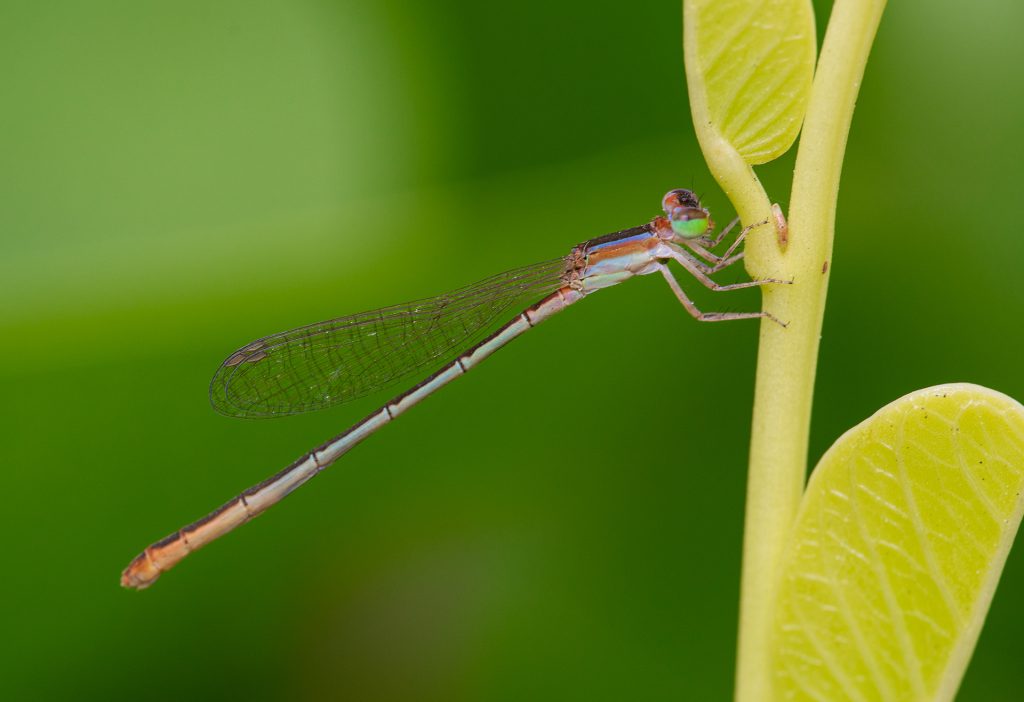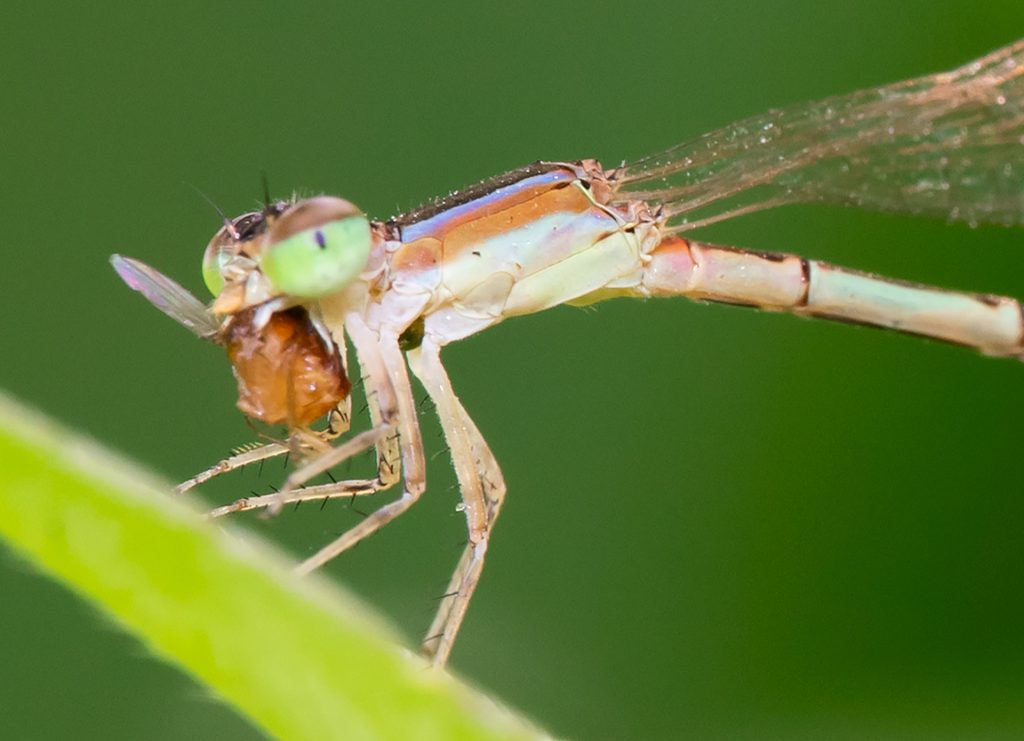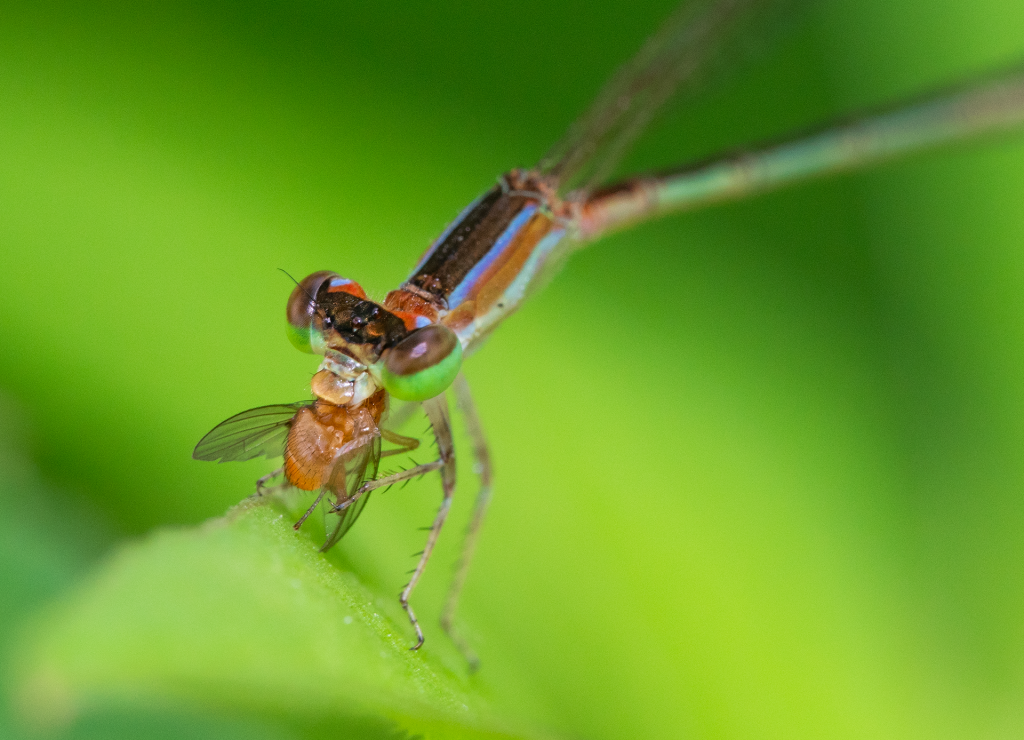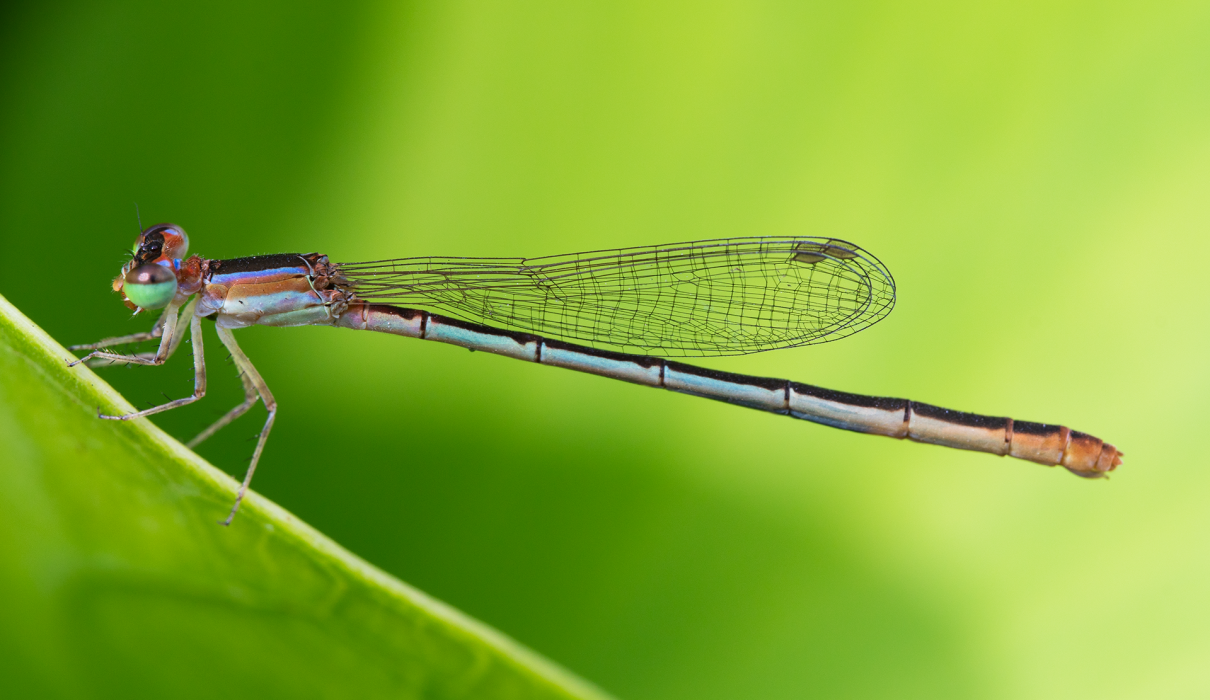The Agriocnemis pygmaea, also known as the wandering midget or pygmy wisp, is a fascinating species of damselfly belonging to the family Coenagrionidae. This petite creature, with its delicate features, can be spotted across Asia and parts of Australia. I’ve personally encountered this small wonder on my island, Noonu Lhohi, as well as in the bustling capital city of Maldives, where I captured some photos of these tiny beings in Hulhumale.



Scientific Classification:
- Domain: Eukaryota
- Kingdom: Animalia
- Phylum: Arthropoda
- Class: Insecta
- Order: Odonata
- Suborder: Zygoptera
- Family: Coenagrionidae
- Genus: Agriocnemis
- Species: A. pygmaea
Description and Habitat: The wandering midget is a small damselfly characterized by its black-capped green eyes and a black thorax adorned with apple green stripes on its lateral sides. Its abdomen, spanning segments 1 to 7, showcases a striking contrast of black dorsally and pale green ventrally, while the remaining segments exhibit a vibrant orange-red hue. In older males, a snowy white pruinosed appearance may obscure some markings. Females, on the other hand, display more robust features and come in several color morphs. Breeding primarily occurs in marshes and ponds.
Odonata: The Agriocnemis pygmaea belongs to the order Odonata, commonly known as dragonflies and damselflies. These insects are distinguished by their large, transparent wings, elongated bodies, and slender abdomens. While dragonflies are known for their sturdier build and perpendicular wing posture at rest, damselflies, like the wandering midget, hold their wings closed above their bodies. Both dragonflies and damselflies are predatory, preying on mosquitoes, flies, and other small insects near freshwater habitats such as ponds, lakes, streams, and rivers.
Damselflies: Damselflies, including the wandering midget, play a crucial role as predators in controlling insect populations. They are admired not only for their beauty but also for their intricate flying patterns. Found near freshwater habitats, these delicate creatures spend the majority of their lives in their nymphal aquatic stage before emerging as adults, contributing to the balance of ecosystems.
References:
- Wikipedia
- iNaturalist


